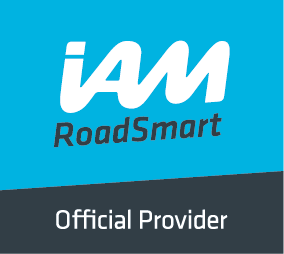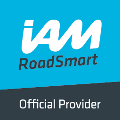St. Helens Group driving tips
Read our useful driving tips provided by Mark Farnworth, Group Vice-President or from other Group members or IAM RoadSmart where stated.
Browse by topic (click to view and then press back arrow)
ABS, Books, 'Automatic' Gearboxes, Dual carriageways, Country driving, Eco driving, Green traffic lights, Handbrake, Horses, Indicating, Motorway driving, Observation, Overtaking, Roundabouts, Signalling, Spoken thought, System of Car Control, Terminology, Town Driving, Traffic lights, Vehicle balance
Advanced Driving Books
Two books are recommended as background reading for advanced driving:
IAM RoadSmart Advanced Driver Course Logbook. The definitive guide to passing the IAM RoadSmart Advanced Driver Test.
'Roadcraft, The Police Drivers Manual'. For those requiring a deeper understanding of advanced driving,
Advanced driving terminology
Terminology is used in all specialised activities, advanced driving being no exception. Within our Group we try to keep terminology to a minimum and when used, the 'giver' should be certain that the 'receiver' understands. Described below are the meanings of a few of the more technical words and phrases we use within the St. Helens & District Group.
Anti-lock Braking System (ABS)
Have you ever thought what ABS means and what it does? Hopefully the next few lines will shed a little light on the subject and dispel some of the myths.
Corners and bends
Corners and bends are hazards that are encountered on most journeys and must be negotiated safely. The System of Car Control is applied to these road features, but the way it is applied depends to some extent on road speed.
Country driving
Driving in country areas is perhaps the most demanding of all driving since speeds are generally high and there can be a hazard around almost every bend. Observation needs to be particularly good and is the key element in the gathering of .....
Dealing with horses
It is not unusual on Sunday mornings to come across horses so let us look at what we should expect and what we should do.
Dealing with roundabouts
Let us suppose that you are on a dual carriageway approaching a roundabout (400m away). You are currently in the left lane and you intend to turn right at the roundabout. Information: - Take - You see the roundabout and its triangular warning signs in the distance. There are no vehicles between you and the roundabout but you see vehicles on the roundabout. Mirror check. There are two vehicles behind, both in the left lane.
Driving tips at glance
As selection of brief driving tips to take your driving to the next level.
Eco driving
EcoSafe-driving is about driving in a way that suits you, your car and the environment and minimises risk to yourself and others. It is driving to reduce fuel consumption, greenhouse gas emissions, accident rates and noise levels – therefore having a positive impact on both you as a driver and the environment.
Indicating just in case
As Advanced Drivers we should only indicate when another road user can benefit from our signal or in anticipation of such a signal being required. This apparently straight forward piece of advice can actually cause no end of confusion when its applied in practise on our roads.
Motorway driving
Here are some tips dealing with joining, driving on and leaving motorways.
Observation
Observation is a basic skill of advanced driving. Good powers of observation demand practice, concentration and thought.
Good observation is essential but the refinement of this skill is learning to be selective in what is observed and to distinguish what should be acted upon and what can be ignored.
Overtaking
This is probably the most dangerous manoeuvers that we do as drivers. Three conditions need to be met before overtaking: 1. the vehicle must be capable of quickly responding to the use of the accelerator pedal 2. the driver must be concentrating and 3. the safety of the full overtaking manoeuver must be predicted by the driver BEFORE starting the overtake.
Signalling precedence
Judge precedence by road markings and the position/movement of vehicles. Give precedance by the speed and position of your vehicle'. Fair enough, but what about headlamp flashing? I hear you ask...
Spoken thought
Spoken Thought or Commentary as some would call it, is enough to make an Associate's hair curl and their palms sweat. Some potential test candidates feel that this is a vital part of the test. It isn't. In fact it isn't even compulsory! Having said this, for those aspiring to get an IAM F1rst (Associates or existing IAM members undergoing a voluntary re-assessment), ‘spoken thought’ is in fact compulsory.
The System of Car Control
The 'System' is a systematic method of driving which, if used correctly, will substantially reduce the risk of a driver being the cause of an accident.
The true meaning of green
Next time you are approaching a junction with traffic lights, ask yourself what a green light means. If your answer is ‘go’, you are only half right!
The use of automatic gearboxes
This article is a summary of an article produced by the IAM RoadSmart on automatic gearboxes.
The use of the handbrake
If properly working, the handbrake ensures that a vehicle does not move of its own accord once it has been stopped. As advanced drivers, we seek to minimise as much as possible any risk to ourselves or our vehicles and so the handbrake is a useful tool in our armoury.
Town driving
A busy town centre during the day or evening is fraught with danger from all sides. Rarely do we get the chance to get up to the 30 m.p.h. speed limit. Pedestrians, parked vehicles, taxi-ranks, buses, vehicles loading and unloading and road works are some of the hazards we have to contend with. By using the System of Car Control we have a systematic approach for dealing with any hazards we see - as and when they arise.
Traffic lights on dual carriageways
Two issues need to be addressed: 1. moving through lights at a 'safe' speed 2. being in a gear which allows good control of speed with the accelerator pedal.
Vehicle balance
A Simple Explanation of Vehicle Stability in Bends. Normally the faster you want to go, the higher the gear you use. But have you noticed that the faster you want to go around a bend the lower the gear you have to use? Why?….because of vehicle stability

